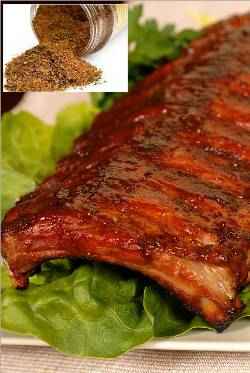How To Smoke Meats - Master the Art of Smoking for Delicious Flavors
How To Smoke Meats - Master the Art of Smoking for Delicious Flavors
Learn How to Smoke Meats: Unlocking Flavorful Delights
If you've ever wondered how to smoke meats to achieve mouthwatering flavors, you're in the right place. Smoking meats is not just a cooking technique; it’s a celebrated culinary art form that brings out rich, deep flavors and tender textures. Whether you’re a seasoned grill master or new to smoking, this guide will provide you with the knowledge and skills to elevate your meat dishes to delicious heights.
Understanding the Basics of Smoking
Before diving into how to smoke meats, it's crucial to understand the fundamentals of the smoking process. Smoking meat involves cooking it at low temperatures over a prolonged period while exposing it to aromatic wood smoke. This method infuses the meat with unique flavors and helps tenderize the fibers, resulting in a delightful end product.
The Science Behind Smoking
The science of smoking is fascinating and underpins why it is such an effective cooking technique. The smoke produced by burning wood contains compounds that contribute to the flavor profile of the meat, including phenols, carbonyls, and organic acids. When combined with the low-and-slow cooking method, these compounds create a comprehensive taste experience that cannot be achieved by traditional methods alone.
- Enhances flavors with rich smoke profiles.
- Tenderizes meat for a melt-in-your-mouth experience.
- Perfect for various meats, including pork, beef, and poultry.
- Allows culinary creativity through different wood types and marinades.
Essential Tools and Equipment
To learn how to smoke meats effectively, you’ll need the right tools. Here’s a list of essentials:
- Smoker: Choose between electric, charcoal, or wood-burning smokers depending on your preference.
- Thermometer: A good meat thermometer is crucial for monitoring internal temperatures.
- Wood Chips or Chunks: Experiment with various wood flavors, such as hickory, mesquite, or apple.
- Rub and Marinade Ingredients: Having a selection on hand will enhance flavor.
Choosing the Right Meat
Knowing how to smoke meats starts with selecting the right cuts. While almost any meat can be smoked, some cuts stand out for their flavor and tenderness when smoked. Here are some popular options:
- Pork Shoulder: This cut is ideal for pulled pork and becomes incredibly tender when smoked.
- Brisket: A classic choice for BBQ lovers, brisket requires a long cooking time to break down its connective tissue.
- Chicken Thighs: Dark meat absorbs smoke flavor well and remains juicy.
- Sausages: Smoking enhances the flavors of these savory links, making them even more delicious.
Preparing Your Meat for Smoking
Preparation is vital in knowing how to smoke meats optimally. Here’s a simple but effective checklist:
- Trim excess fat to avoid greasiness.
- Apply a dry rub or marinade to enhance flavor—a mixture of spices can make a world of difference.
- Let the meat rest after seasoning to allow flavors to penetrate.
- Preheat your smoker to the desired temperature, usually between 225°F to 250°F (107°C to 121°C).
Smoking Techniques
Now, let's dive into the techniques that will show you how to smoke meats effectively. The two primary methods of smoking are:
- Hot Smoking: This involves cooking the meat while infusing it with smoke. It's suitable for cooking through and is the most common method.
- Cold Smoking: Used for flavoring meats without cooking them; this technique requires specific temperatures and is ideal for items like salmon.
Timing Your Smoke
Timing is everything when learning how to smoke meats. Using a meat thermometer ensures that you don’t overcook or undercook your meat. For example, pork shoulder should be cooked to an internal temperature of about 195°F (90°C) for shredding, whereas chicken should reach 165°F (74°C).
Keep in mind that smoking is a slow process, often taking several hours depending on the cut and size of the meat. Patience is key!
Finishing Touches: Resting and Serving
Once your meat is done smoking, it’s time to let it rest. This step allows the juices to redistribute, ensuring every bite is juicy and flavorful. Resting can take anywhere from 30 minutes to a few hours, depending on the size of the cut.
When ready to serve, slice against the grain and place on a platter. Accentuate the flavors with your favorite barbecue sauce or side dishes like coleslaw, baked beans, or cornbread.
Why Mastering How to Smoke Meats is Worth It
Mastering the art of smoking meats is not just about cooking; it’s about creating memorable experiences. Imagine being the hero of your next BBQ, wowing friends and family with tender, smoky flavors that tantalize the taste buds. Learning how to smoke meats opens a world of culinary possibilities and enhances your grilling repertoire.
Plus, once you get the hang of it, it’s a skill that can be shared and enjoyed with loved ones, making it a lasting tradition.
Join the Smoking Community
As you embark on your journey to learn how to smoke meats, you’re not alone. Numerous resources, online forums, and local groups are dedicated to this beloved culinary art. Engaging with others can provide tips, recipes, and support as you refine your skills.
Conclusion: Start Your Smoking Adventure Today!
With this extensive guide on how to smoke meats, you have everything you need to take your culinary skills to the next level. Whether you aim to impress at your backyard BBQ or savor homemade smoked meats, the journey will be rewarding. So, gather your tools, pick your meat, and let the smoking adventure begin!
Ready to become the ultimate pitmaster? Explore our full range of smoking supplies and let your next culinary creation shine. Transform your cooking experience and delight in the mouthwatering flavors of smoked meats!


